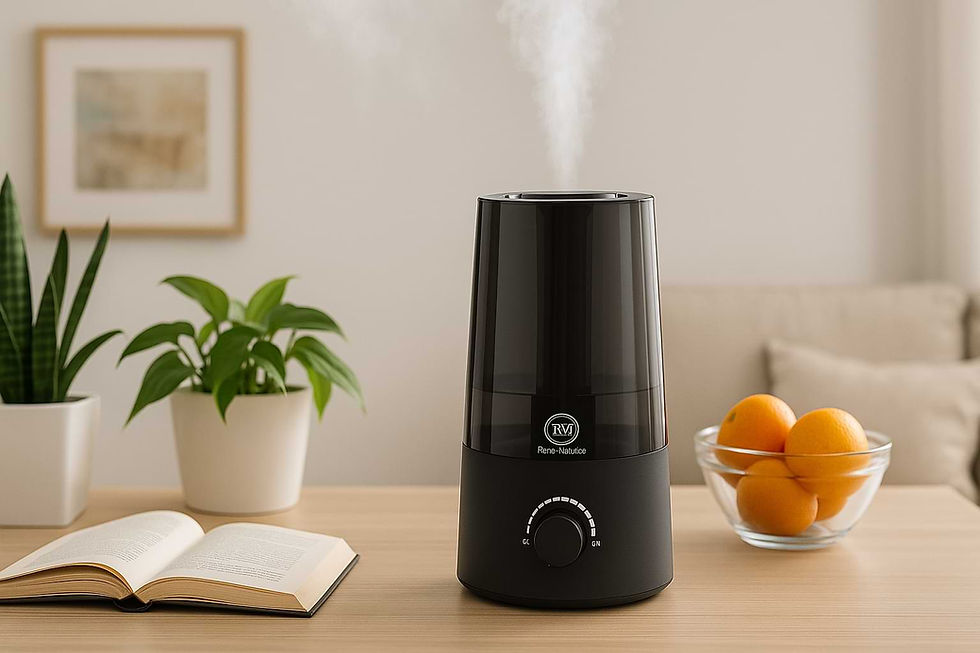What Is a Humidifier Used for in a Home?
- vishwakarmashivans9
- Aug 4
- 3 min read

A humidifier for room use is more than just a comfort tool—it’s a health and wellness asset. Whether it’s a dry winter day or you’re running air conditioning non-stop, indoor air can quickly lose moisture. That’s where a room humidifier comes in. By adding humidity to the air, a home humidifier can help alleviate dry skin, sore throats, and respiratory discomfort, while also protecting your home’s furniture and structure. But how exactly does it work, and why should every home consider one?
Relieves Dry Skin and Irritated Sinuses
Dry indoor air is one of the most common causes of itchy skin, chapped lips, and irritated nasal passages. A humidifier for room uses helps maintain optimal humidity levels, keeping your skin hydrated and reducing sinus irritation. This is especially helpful in winter when heaters can dry out your environment drastically.
Improves Sleep and Reduces Snoring
A home humidifier adds moisture to the air, making it easier to breathe while sleeping. Moist air helps prevent dry throats and nasal passages, which can reduce snoring and improve sleep quality. People with sleep apnea or allergies often notice significant improvements with a room humidifier in their bedroom.
Protects Furniture and Wood Floors
Low humidity can cause wood to crack and paint to peel. A home humidifier helps preserve your furniture, flooring, and even musical instruments by maintaining the proper moisture balance in your home.
Supports Plant Health
Houseplants thrive in humid environments. Using an ultrasonic humidifier condition helps keep your indoor plants lush, vibrant, and healthy, especially in dry climates or during the winter months.
Reduces Static Electricity
Ever get shocked when touching a doorknob or pulling off your sweater? That’s static electricity caused by dry air. A room humidifier can help eliminate this annoyance by restoring proper moisture levels to the air.
Helps Manage Cold, Flu, and Allergies
Humidified air can soothe symptoms like congestion, coughing, and sore throats. A home humidifier may also help reduce airborne viruses, making it a valuable tool during cold and flu season. Additionally, it helps trap allergens like dust and pollen, making it easier for allergy sufferers to breathe comfortably.
Conclusion
The Diffusers and humidifiers for room use is a simple yet powerful device that supports health, comfort, and even the longevity of your home’s interior. From easing cold symptoms to protecting your wooden furniture, a home humidifier serves many purposes beyond just adding moisture. Whether you need relief from dry air or simply want to create a more pleasant living space, investing in a room humidifier is a smart and beneficial choice for any household.
Frequently Asked Questions
1. Where should I place a humidifier in my home?
Place it in commonly used rooms like bedrooms or living areas. Keep it on a raised surface and away from walls or electronics for best results.
2. Can I use tap water in my humidifier?
It’s best to use distilled water to avoid mineral buildup and white dust. Some humidifiers have filters that can handle tap water, but always check the manual.
3. What humidity level should I maintain in my home?
Aim for 30–50% relative humidity. Anything below 30% is too dry, and above 50% can promote mold growth.
4. Is a humidifier safe for babies and children?
Yes, when used properly. A room humidifier can ease breathing and prevent dry skin in infants and toddlers. Cool mist models are typically recommended for safety.
5. Can I run a humidifier all night?
Absolutely! In fact, running a humidifier for room use overnight is common. Just make sure the tank is full and the unit is clean.



Comments